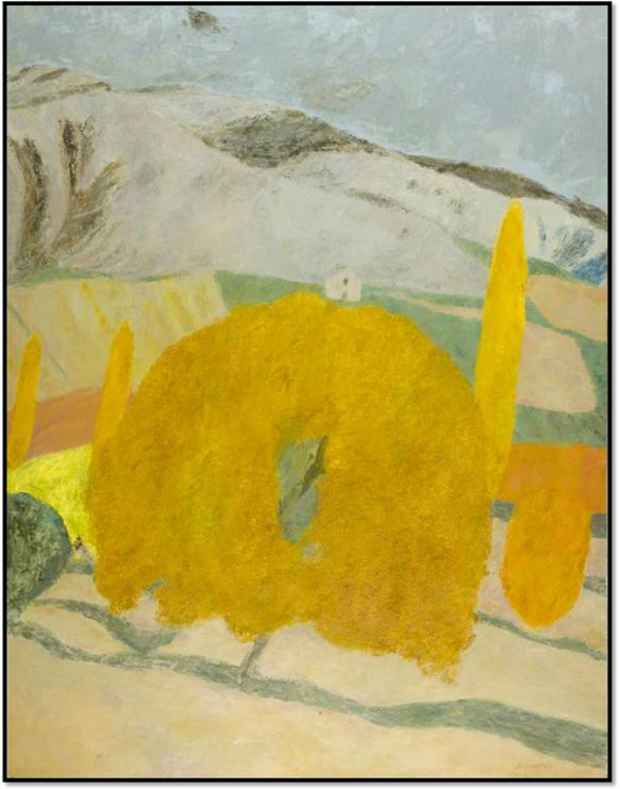Pierre Boncompain “The Feel of Color”
Franklin Bowles Galleries -New York

This event has ended.
It has been more than two years since our last Pierre Boncompain exhibition in the United States and there are several exciting new developments to report concerning his career. Boncompain recently had a one-man show at the prestigious Musée d’Art Contemporain, St. Martin in Montélimar, situated in his beloved Provence. This vast exhibition filled ten halls and included not only his exquisite paintings and pastels, but also tapestries and ceramics. There are two other significant public exhibitions currently in the planning stages for Boncompain; one will be in Strasbourg, France and the other at the Jheronimus Bosch Art Center in the Netherlands. The Strasbourg exhibition will feature a superb group of sixty pastels and three tapestries illustrating the Cantique des Cantiques, a collection of dramatic love poems from the Old Testament. Boncompain’s Cantique des Cantiques was previously exhibited in both Holland and Japan and this important set has been promised to the Musée de Valence. This museum, located in the city of Pierre’s birth, was an early supporter of Boncompain’s career and has hosted several exhibitions of his work. In addition, a new book on Pierre’s work, Un Certain Silence, debuted earlier in the year at a gala reception hosted by the French House of Representatives in the artist’s honor.
When Franklin Bowles Galleries first introduced the work of Pierre Boncompain, our collectors were enthralled by his velvety pastels on paper. I doubt that many are familiar with the wonderful history behind those pastels. La Maison du Pastel is an extraordinary shop in Paris which has been in business since 1720. They create the world’s most-desired pastel sticks, handmade with the purest pigments from around the world. Now run by the original owner’s grandniece, the shop is the source for the lustrous colors that you see in the pastel works of Boncompain. A wonderful video about the store and the making of the pastels can be seen on our website: www.franklinbowlesgalleries.com
The charm of Provence flows through Boncompain’s new paintings. His themes are simple—nudes, still lifes, landscapes—but through his continued experimentation with intense color, expressive line, and flat, patterned surfaces, he transcends the everyday to offer us a vision of life that is infinitely attractive.
Born in 1938 in Provence, Pierre Boncompain has been painting and drawing since he was a young child. Encouraged by his parents in his pursuit of the arts, Boncompain moved to Paris and graduated first in his class at the French National Academy of Decorative Arts before moving on to the National Academy of Fine Arts, where he studied in the Legueult atelier. Today, with his wife, model and muse Colette, he splits his time between his studios in Paris and Provence.
Pierre Boncompain evokes imagery with the sensual riches of his birthplace, Provence. Boncompain grew up with artistic parents and was surrounded by rolling hills, fields of seasonal colors giving rise to a lusty landscape inspiring his lush figures, vibrant still lifes and thought-provoking interiors. Not since Paul Cezanne has an artist set out to paint “en motif” with such brilliance of color and imagination. Boncompain does not paint with a realism that could destroy the mystery of the original. An apple or a face must be surrounded by their untouchable mystery; they must be given a personal aura. His paintings are considered “visual poetry for the viewer.” Expressing nuances of nature and the world around us is a sentiment in his paintings making Boncompain one of the most important and fresh artists painting today. “Painting is the creation of silence,” quotes the artist. Boncompain insists that the viewer be pensive and truly be part of his work and the aura therein without vocalizing the emotions at hand. Boncompain’s paintings are one of three major components in his illustrious oeuvres: his drawings demonstrate a skill for disegno intellectualism as they underlie his works in ceramics and oil paintings. His sketches alone are complete with rapid fluidity and art critics state that his first impressions are ‘spot on.”
[Image: Pierre Boncompain “l’arbre Roux” Oil on canvas, 57 x 44 in.]
Media
Schedule
from October 19, 2013 to November 19, 2013